 W
WJohn Auger was a pirate active in the Bahamas around 1718. He is primarily remembered for being captured by pirate turned pirate-hunter Benjamin Hornigold.
 W
WJoseph Bannister was an English pirate who operated in the Caribbean during the Golden Age of Piracy. He is best known for defeating two Royal Navy warships in battle.
 W
WStede Bonnet was an early eighteenth-century Barbadian pirate, sometimes called "The Gentleman Pirate" because he was a moderately wealthy land-owner before turning to a life of crime. Bonnet was born into a wealthy English family on the island of Barbados, and inherited the family estate after his father's death in 1694. In 1709, he married Mary Allamby, and engaged in some level of militia service. Because of marital problems, and despite his lack of sailing experience, Bonnet decided he should turn to piracy in the summer of 1717. He bought a sailing vessel, named it Revenge, and travelled with his paid crew along the Eastern Seaboard of what is now the United States, capturing other vessels and burning other Barbadian ships.
 W
WJoseph Bradish (1672–1700) was a pirate best known for a single incident involving a mutiny.
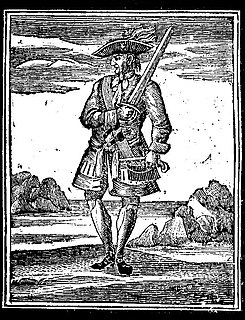 W
WJohn Rackham, commonly known as Calico Jack, was an English pirate captain operating in the Bahamas and in Cuba during the early 18th century. His nickname was derived from the calico clothing that he wore, while Jack is a nickname for "John".
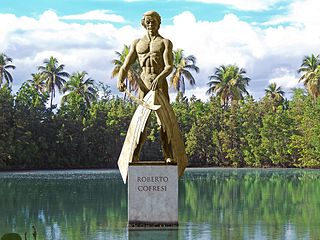 W
WRoberto Cofresí y Ramírez de Arellano, better known as El Pirata Cofresí, was a pirate from Puerto Rico. He was born into a noble family, but the political and economic difficulties faced by the island as a colony of the Spanish Empire during the Latin American wars of independence meant that his household was poor. Cofresí worked at sea from an early age which familiarized him with the region's geography, but it provided only a modest salary, and he eventually decided to abandon the sailor's life and became a pirate. He had previous links to land-based criminal activities, but the reason for Cofresí's change of vocation is unknown; historians speculate that he may have worked as a privateer aboard El Scipión, a ship owned by one of his cousins.
 W
WRobert Deal was a pirate active in the Caribbean. He is best known for his association with Charles Vane.
 W
WJohn Derdrake, known as “Jack of the Baltic,” was a Danish pirate active in the 1700s. His story, if true, makes him one of the few pirates known to force his victims walk the plank.
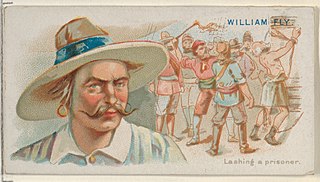 W
WCaptain William Fly was an English pirate who raided New England shipping fleets for three months in 1726 until he was captured by the crew of a seized ship. He was hanged in Boston, Massachusetts and his body publicly exhibited as a warning to other pirates. His death is considered by many to mark the end of the Golden Age of Piracy.
 W
WCharles Gibbs was the pseudonym of an American pirate, born James D. Jeffers. Jeffers was one of the last active pirates in the Caribbean during the early 19th century, and was among the last persons to be executed for piracy by the United States.
 W
WPedro Gilbert or Don Pedro Gibert was an early 19th-century pirate, who was one of the few remaining pirates continuing to raid shipping on the Atlantic coast.
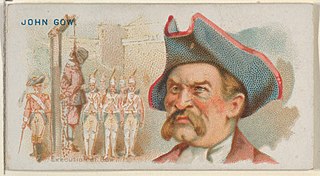 W
WJohn Gow was a notorious pirate whose short career was immortalised by Charles Johnson in the 1725 work The History and Lives of All the Most Notorious Pirates and Their Crews. Little is known of his life, except from an account by Daniel Defoe, which is often considered unreliable, the report on his execution, and an account by Mr. Alan Fea, descendant of his captor, published in 1912, almost two centuries after his death.
 W
WKlein Henszlein [Klaus Hanslein] was a German pirate from 1560 to 1573 who raided shipping in the North Sea until his defeat and capture by a fleet from Hamburg. Taken back to Hamburg, Henszlein and his men were paraded through the city streets before being beheaded on September 10, 1573; their heads were then impaled on stakes. In a later account, the executioner described how he "flicked off" the heads of the thirty-three pirates in only 45 minutes, then proceeding to behead the bodies of those pirates killed during their capture. He later claimed to have been "standing in blood so deep that it well nigh in his shoes did creep."
 W
WAlbert W. Hicks, also known as Elias W. Hicks, William Johnson, John Hicks, and Pirate Hicks, was a triple murderer, and one of the last persons executed for piracy in the United States. Cultural historian Rich Cohen places him as the first New York City legendary gangster figure, a bridge between the piracy of old and rise of a new 'gangster nation'.
 W
WEdward Jordan (1771–1809) was an Irish rebel, fisherman and pirate in Nova Scotia. He was typical of the violent but short-lived pirates in the 19th century following the end of "Golden Age of Piracy" in the 18th century. Born in County Carlow, Ireland, he took part in the Irish rebellions of 1797-98 but was pardoned and attempted to start a new life as a fisherman in Nova Scotia. On 13 September 1809, desperate to avoid debts, he slaughtered the crew of a merchant who came to seize the schooner he owned named Three Sisters. However the captain, John Stairs, managed to escape overboard to be rescued by a passing fishing schooner and survived to spread the alarm. A few weeks later the Royal Navy schooner HMS Cuttle captured Jordan.
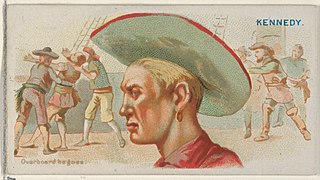 W
WWalter Kennedy was an English pirate who served as a crew member under Howell Davis and Bartholomew Roberts.
 W
WWilliam Kidd, also known as Captain William Kidd or simply Captain Kidd, was a Scottish sailor who was tried and executed for piracy after returning from a voyage to the Indian Ocean. Some modern historians, for example Sir Cornelius Neale Dalton, deem his piratical reputation unjust.
 W
WOlivier Levasseur, was a French pirate, nicknamed La Buse or La Bouche in his early days for the speed and ruthlessness with which he always attacked his enemies as well as his ability to verbally attack his opponents. He is known for allegedly hiding one of the biggest treasures in pirate history, estimated at over £1 billion, and leaving a cryptogram behind with clues to its whereabouts.
 W
WPhilip Lyne was a pirate known for his cruelty and his association with Francis Spriggs.
 W
WChristopher Moody was a pirate as a member of Bartholomew Roberts' crew but was never a Captain in his own right. He is best known not for his own actions but for a popular Jolly Roger flag mis-attributed to him as well as for later authors confusing him with unrelated pirate William Moody.
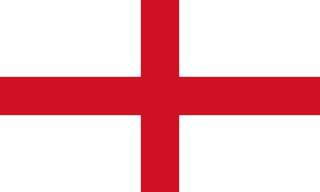 W
WJohn Quelch was an English pirate who had a lucrative but very brief career of about one year. His chief claim to historical significance is that he was the first person to be tried for piracy outside England under Admiralty Law and thus without a jury. These Admiralty courts had been instituted to tackle the rise of piracy in colonial ports where civil and criminal courts had proved ineffective.
 W
WPhilip Roche (1693–1723) was an Irish pirate active in the seas of northern Europe, best known for murdering the crews and captains of ships he and his men took over.
 W
WGustav Adolf Skytte af Duderhof was a Swedish nobleman. He became a pirate and plundered ships in the Baltic Sea in the years 1657 to 1662.
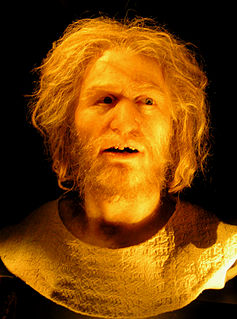 W
W"Nikolaus" Storzenbecher or "Klaus" Störtebeker was reputed to be leader of a group of privateers known as the Victual Brothers. The Victual Brothers were originally hired during a war between Denmark and Sweden to fight the Danish and supply the besieged Swedish capital Stockholm with provisions. After the end of the war, the Victual Brothers continued to capture merchant vessels for their own account and named themselves "Likedeelers". Recent studies manifest that Störtebeker was not called "Klaus" by prename but "Johann".
 W
WFilippo di Piero Strozzi was an Italian condottiero, a member of the Florentine family of the Strozzi. He fought mainly for France.
 W
WCharles Vane was an English pirate who operated in the Bahamas during the end of the Golden Age of Piracy.
 W
WCord Widderich was a pirate active during political conflicts between Dithmarschen and North Frisia in the early fifteenth century. He lived during the times of Klaus Störtebeker and the Victual Brothers, but was not part of their movement.